#Key Differences
Explore tagged Tumblr posts
Text
my two cents. not every atp rivalry is stefaniil… i do not think jack felix have the collective gay pizazz for that. also the joy of stefaniil is that they are both deranged in similar yet opposite ways but always quite fated towards each other. jack felix is two otherwise incredibly levelheaded and polite guys who have inexplicable beef. i believe their joy might lie in the fact that it is very out of character for them to do this
#u are misinterpreting stefaniil AND jack felix#yes obviously felix is gay but i dont think jack is. unless jannik is around then he is#but between the two of them theres no running homosexual undertones unlike stefaniil#key differences#tennis
21 notes
·
View notes
Text
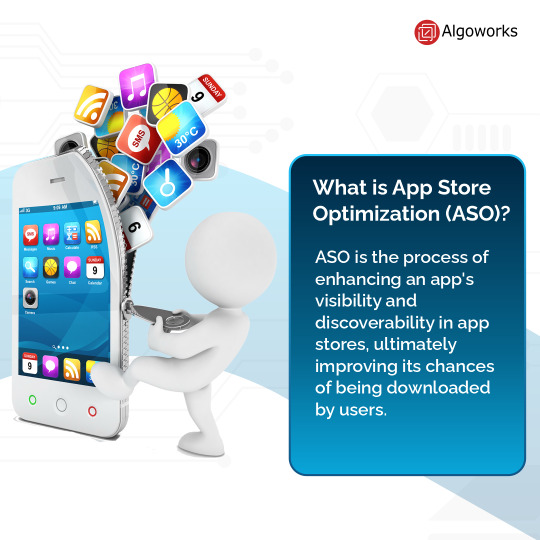
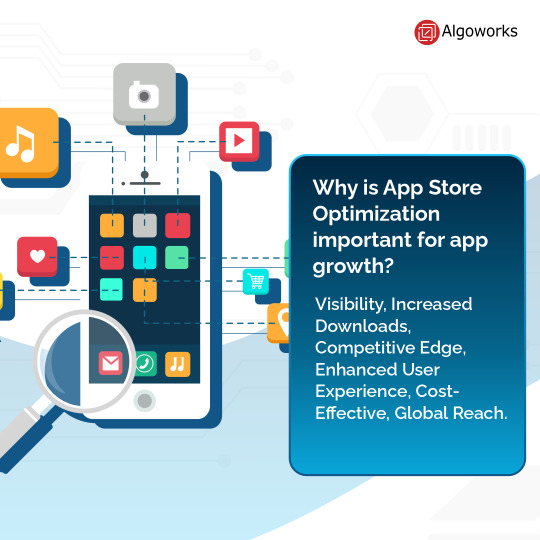
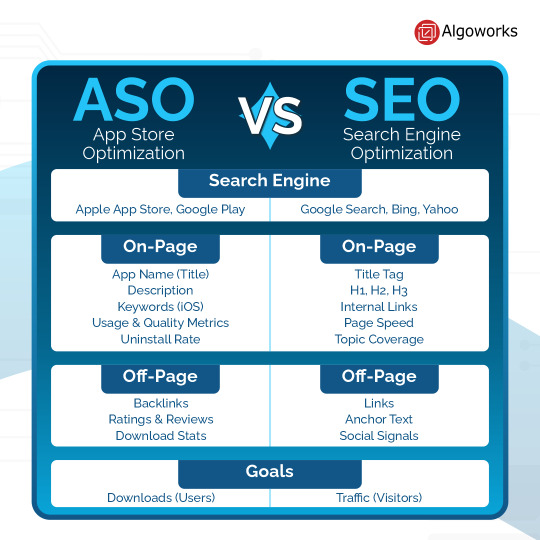

App Store Optimization (ASO) vs. SEO: A Battle for Visibility 📈📱 Discover the key differences in the quest for app and web supremacy.
4 notes
·
View notes
Text
KED didn't lead to this till my SPERM WAS STOLEN! mid-sleep.
In 2019 late September I was like: What is wrong with her? What could it be? She's grunting? There's some kind of sex-damage on her. If she S'd my D for me before school starts she'd get cured.
That move changes its intent upon you even if you call yourself a BITCH. She was the type to be as in: "Let's go bitches" at with her soro sisters.
It's a northern monstrosity group with her in it. How to get free food like the tropics seem unfair in to them.
The north has the social hardline that the tropics lack.
0 notes
Text
Data Scientist vs. Data Analyst: Key Differences Explained
What is Data Analytics?
Data analytics is the process of examining raw data with the aim of drawing meaningful conclusions and informing decision-making. It involves several stages, including data collection, cleaning, transformation, analysis, interpretation, and presentation. In essence, data analytics is about turning raw numbers into actionable insights that drive business growth, improve efficiency, and solve complex problems.
By uncovering past and present trends, identifying patterns, and understanding the drivers behind certain phenomena, data analytics empowers businesses to move beyond intuition and base their decisions on solid data. Whether it’s analyzing sales figures, website traffic, or sensor data, the ultimate goal of data analytics is to provide a clear picture of the current state of affairs and guide future action.
What is a Data Scientist?
A Data Scientist is a professional who combines expertise in statistics, mathematics, and computer science to extract valuable insights from data. They use a variety of advanced techniques, including machine learning, predictive modeling, and statistical analysis, to solve complex business problems and make data-driven decisions. Data scientists are experts in working with large and unstructured datasets, and their work often involves uncovering hidden patterns and trends that can be used to drive business strategy, product development, or operational efficiency.
Data scientists are not just analysts—they are problem solvers who leverage a combination of analytical, programming, and domain-specific skills to develop models and algorithms that help organizations gain a competitive edge.
Data Analyst vs. Data Scientist: Roles and Responsibilities
While both Data Analysts and Data Scientists work with data, their roles differ in terms of their focus, methodologies, and the types of problems they address. Let’s break down the primary responsibilities of each role:
The Data Analyst: Uncovering the "What" and "Why"
A Data Analyst primarily focuses on understanding what has happened and why it happened. They delve into existing data to answer specific business questions, usually with a focus on the present or past. Their responsibilities typically include:
Data Collection and Cleaning: Gathering data from various sources, such as databases, spreadsheets, and APIs, and ensuring it is clean and accurate.
Data Wrangling and Transformation: Preparing the data for analysis by transforming it into a usable format, often involving data manipulation and aggregation.
Exploratory Data Analysis (EDA): Analyzing data to identify patterns, trends, and anomalies using statistical methods and visualization techniques.
Developing and Maintaining Databases: Designing and maintaining efficient data storage systems for easy access and retrieval.
Generating Reports and Dashboards: Creating clear, concise reports and dashboards to communicate findings to stakeholders.
Answering Business Questions: Using data to respond to business inquiries and provide data-driven answers to decision-makers.
Identifying Key Performance Indicators (KPIs): Defining and tracking metrics to assess business performance and pinpoint areas for improvement.
The Data Scientist: Predicting the "What Next" and Building Solutions
On the other hand, a Data Scientist takes a more forward-looking approach. Their role goes beyond understanding the past and present to predicting future outcomes and solving complex business problems using advanced tools and techniques. Their responsibilities typically include:
Identifying Business Problems: Collaborating with stakeholders to translate complex business challenges into data science problems.
Designing and Implementing Machine Learning Models: Developing predictive models and algorithms that forecast trends, automate processes, and personalize experiences.
Statistical Modeling and Hypothesis Testing: Using advanced statistical techniques to validate hypotheses and build robust models.
Working with Big Data Technologies: Leveraging tools like Hadoop, Spark, and cloud computing platforms to process and manage large datasets.
Feature Engineering: Creating relevant features from existing data to enhance the performance of machine learning models.
Model Evaluation and Deployment: Testing models for accuracy and deploying them into real-world systems for practical use.
Communicating Complex Findings: Presenting data science insights and model outputs to both technical and non-technical audiences.
Research and Innovation: Keeping up-to-date with the latest advancements in data science and experimenting with new techniques to address evolving business needs.
Data Science vs. Data Analytics: Key Differences
Let’s take a closer look at the key differences between Data Science and Data Analytics.FeatureData AnalystData ScientistPrimary FocusUnderstanding past and present dataPredicting future trends and solving complex problemsTypical Questions"What happened?" "Why did it happen?""What will happen?" "How can we make it happen?"Analytical TechniquesStatistical analysis, data visualization, reportingMachine learning, statistical modeling, algorithm developmentData ComplexityWorks with structured data and well-defined problemsDeals with unstructured or semi-structured data and ambiguous problemsTools & TechnologiesSQL, Excel, statistical software (e.g., R, SPSS), BI tools (e.g., Tableau, Power BI), basic scripting (Python)Python (SciPy, Scikit-learn, TensorFlow, PyTorch), R, SQL, big data technologies (e.g., Hadoop, Spark), cloud platformsProgramming SkillsProficiency in SQL, basic scripting in Python or RStrong programming skills in Python or R, expertise in machine learning librariesModeling EmphasisBasic statistical modeling and interpretationAdvanced statistical modeling, machine learning model building and evaluation
Data Analyst vs. Data Scientist: Skill Comparison
The roles require different skill sets due to their contrasting focus and responsibilities. Here’s a comparison of the essential skills needed for each role:Skill CategoryData AnalystData ScientistTechnical SkillsSQL, Excel, data visualization tools (Tableau, Power BI), statistical software, basic scripting (Python/R)Strong programming (Python/R), machine learning, statistical modeling, big data technologies, cloud computingAnalytical SkillsStrong statistical reasoning, data interpretation, problem-solvingAdvanced statistical and mathematical skills, critical thinking, experimental designBusiness AcumenUnderstanding of business context and data needsDeep understanding of business problems and ability to translate them into data science solutionsCommunicationExcellent data storytelling and visualization skillsAbility to explain complex technical concepts to non-technical audiencesDomain ExpertiseVaries depending on the industryOften requires deep domain knowledge in specific areas
Choosing Between a Data Analytics and Data Science Career
The decision to pursue a career in Data Analytics or Data Science largely depends on your personal interests, skills, and long-term career goals. Each field has its own strengths and opportunities. To make an informed choice, let’s break down the considerations for each path.
Consider a Career in Data Analytics if:
You enjoy working with structured data to answer specific business questions.
You’re passionate about uncovering insights from existing data and communicating them effectively to stakeholders.
You have a strong aptitude for statistical analysis and are comfortable using tools like SQL and Business Intelligence platforms (e.g., Tableau, Power BI).
You want a role with a direct and immediate impact on business decisions, often through reports, dashboards, or actionable insights.
You’re looking for a career with more accessible entry-level opportunities, where you can get started quickly without requiring deep programming knowledge.
Consider a Career in Data Science if:
You’re fascinated by machine learning, predictive modeling, and solving complex, open-ended problems.
You have a strong foundation in mathematics, statistics, and programming and enjoy the technical aspects of data.
You love building and deploying sophisticated analytical solutions using tools like Python, R, and machine learning libraries (e.g., TensorFlow, Scikit-learn).
You’re comfortable working with large and often unstructured datasets, and have experience handling big data challenges.
You’re driven by research and innovation, always looking for ways to push boundaries and tackle challenging analytical problems that require deep thought and creativity.
Data Analyst vs. Data Scientist: Education and Work Experience
Data Analyst:
Education: A Bachelor’s degree in a quantitative field such as statistics, mathematics, economics, or computer science.
Certifications: Relevant certifications in data analysis tools like Tableau, Power BI, and practical experience gained through internships or entry-level positions.
Data Scientist:
Education: A Master’s or Ph.D. in a quantitative field with a focus on statistics, machine learning, or computer science.
Experience: Significant experience in data analysis, statistical modeling, and programming. A strong portfolio of data science projects and research experience is often essential.
Final Thoughts: Which Role Is Right for You?
Both Data Analysts and Data Scientists play crucial roles in helping organizations leverage the power of data. Understanding their distinct responsibilities, required skills, and career paths is essential for both businesses seeking to build effective data teams and individuals aspiring to a career in this exciting field. By considering your personal interests, strengths, and long-term goals, you can decide which role aligns best with your aspirations.
Conclusion
In the world of data-driven decision-making, both Data Analysts and Data Scientists play pivotal roles in unlocking the value of data. While the Data Analyst focuses on understanding and interpreting historical data to answer specific business questions, the Data Scientist takes a more forward-thinking approach, using advanced algorithms and predictive models to forecast future trends and solve complex problems.
Choosing between a career in Data Analytics or Data Science depends on your interests, skill set, and career aspirations. If you enjoy working with structured data to uncover insights and make immediate business impacts, Data Analytics may be the right path for you. On the other hand, if you’re fascinated by machine learning, statistical modeling, and solving open-ended problems, a career as a Data Scientist could offer you more challenges and innovation opportunities.
0 notes
Text

6K notes
·
View notes
Text

More wip tamagotchis, nautiloid edition.
#nautilus#tamagotchi#ceramic#key chain#love drawing lil men on these#really excited for this one#think the different patterns will look really nice all fired#sea creature#traditional art#cephalopod
2K notes
·
View notes
Text


little chibi creatures
pt2 mmj, vbs & l/n
#decora wandasho turned out so cute fmjdkdk#ik kanade look like a complety different style but i had the idea right after already doing mafuyu and mizuki😭#i peaked at strawberry nene i fear#art#digital art#my art#artists on tumblr#artwork#illustration#cute#nightcord at 25:00#niigo#pjsk fanart#wonderland x showtime#wxs#mafuyu asahina#kanade yoisaki#mizuki akiyama#ena shinonome#tsukasa tenma#rui kamishiro#nene kusanagi#emu otori#decora kei#cute chibi#chibi art#pinkie pie easter egg as usual
3K notes
·
View notes
Text












armand + laws, customs, & rituals
#iwtvedit#iwtv#interview with the vampire#armand#MANY SUCH CASES. this is a mere sampling#a fascinating aspect of his character if you ask me. one of the hugest differences between him and lestat but also louis#armand is a creature of habit and ritual#he follows the Laws and also the one key vow he has made to himself (not to make fledglings... til he does)#louis doesn't want to be confined again and lestat is obsessed with being a rebel and not doing what he's told#anyway. i love him.
3K notes
·
View notes
Text




my longest friend and companion
#persona 3#ryomina#ryoji mochizuki#minato arisato#makoto yuki#pharos#thanatos#lizzy does art#hii everyone long time no post :) been logged out of tumblr for a few months but im still alive and well ^_^#a little something to celebrate one of my favorite days in persona 3 + my favorite pairing...#ryomina is still one of my favorite ships ever because they're so uniquely shaped by their circumstances#death as minato's longest companion throughout life for ten years... always there for him even when death took so much from him#i will forever love death's different forms. pharos. ryoji. thanatos. (not displayed here: nyx avatar)#and i also loved visdev portfolios that have color keys showing rooms with different lighting conditions.#so i smashed those two together and boom :D i made this!!! it was lots of fun :)#not displayed is a fifth image where the room is empty bc minato is long gone (he's in the great seal with ryoji)#i hope everyone has had a very lovely 2024... congrats on making it this far... i cant wait to see what 2025 holds!
2K notes
·
View notes
Text
ok while i fully agree it’s about FAR MORE than gemma vs. helly (autonomy, life, oppression, parental relationship metaphors, etc), it’s worth noting that the marks ARE having a shipping war. with themselves
#yes don’t make everything a shipping war but also#one of the key tensions here. is a shipping war#when ur innie and outie have a different otp </3#severance#severance spoilers#txtn
1K notes
·
View notes
Text
Tableau vs Excel: 5 Key Differences
Tableau and Excel are both powerful data analysis and visualization tools, but they serve different purposes and have distinct features. Let’s explore Tableau vs Excel, key differences:

Data Size and Complexity:
Excel: Excel is best suited for small to medium-sized datasets and simple data analysis tasks. It can handle thousands of rows and columns, but it may become slow or unresponsive when dealing with very large datasets or complex data transformations.
Tableau: Tableau is designed for handling large and complex datasets. It can connect to various data sources, including databases, and efficiently handle millions of rows of data. It excels in data visualization and exploration.
Data Analysis Capabilities:
Excel: Excel provides a wide range of data analysis functions, including formulas, pivot tables, and basic charting. It's suitable for basic data analysis, financial modeling, and creating simple graphs.
Tableau: Tableau is primarily a data visualization tool. It offers advanced data analysis and visualization capabilities, including interactive dashboards, trend analysis, forecasting, and geographic mapping. Tableau is ideal for creating dynamic and interactive visualizations.
Data Transformation and Cleaning:
Excel: Excel provides basic data cleaning and transformation capabilities through functions and features like text-to-columns, filtering, and sorting. It can be used for simple data cleansing tasks.
Tableau: Tableau is not a dedicated data cleaning tool, but it allows you to perform data transformations using calculated fields and data blending.
Collaboration and Sharing:
Excel: Excel is often used for individual or small-scale analysis, and sharing files can lead to version control issues. Collaboration can be challenging, especially when multiple people need to work on the same file simultaneously.
Tableau: Tableau is designed for collaboration and sharing. You can publish interactive dashboards and reports to Tableau Server or Tableau Online, where multiple users can access and collaborate on the same content in real time. It supports version control and user permissions.
Automation and Scalability:
Excel: Excel allows for basic automation through macros and VBA (Visual Basic for Applications). However, it may not be the best choice for automated, large-scale data processing and analysis.
Tableau: Tableau offers better automation and scalability through its scripting and API capabilities. You can automate data refreshes, integrate with other systems, and create custom data-driven applications using Tableau's API.
In summary, Excel is suitable for small to medium-sized data analysis and basic tasks, while Tableau is more robust for large and complex data visualization and analysis.
0 notes
Text
Water management and wastewater disposal are essential aspects of modern infrastructure. Ensuring the right pump is in place can make all the difference. Among the variety of pumps available, the sewage pump and submersible pump often lead to confusion. Both serve different purposes, but how exactly do they differ? Read the article to know the differences between a sewage pump and a submersible pump.
#Sewage Pump#Submersible Pump#Key Differences#Water Management#Wastewater Disposal#Pump Types#Pump Functionality#Infrastructure#Pump Selection#Pump Comparison#Sewage Treatment#Underwater Pumps#Drainage Solutions#Pump Efficiency#Pump Design#Durability#Pump Maintenance#PPS
0 notes
Text

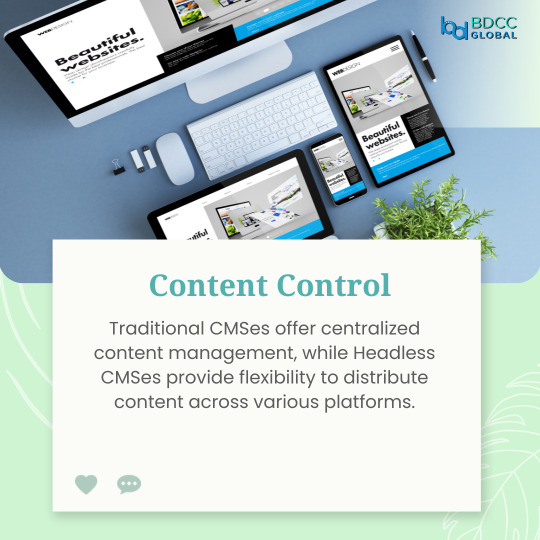


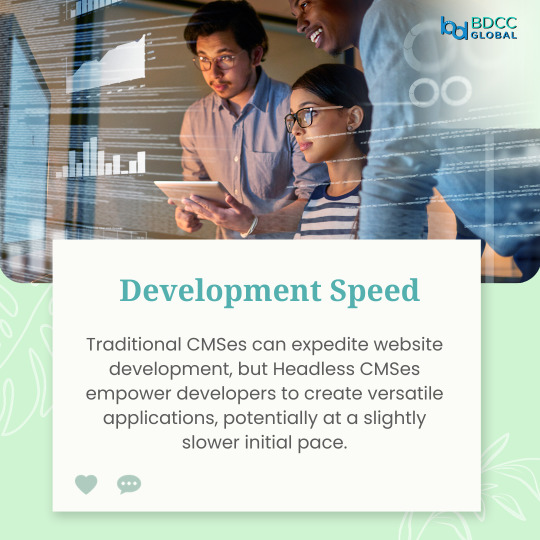
Conventional CMS vs. Headless CMS: Unraveling the Key Differences 📚💡 Explore the Evolution of Content Management.
1 note
·
View note
Text
honestly, i don't blame anyone for not making the connection between rhaegar targaryen and jon snow. they are such different guys to me. you could organically stumble upon rhaegar playing a silver harp in a clearing in the woods, silently weeping into the flowing waters of a crystalline stream. jon is the teenage manager of a fast food chain who sometimes shows up to work dripping wet because he doesn't own an umbrella.
#the key is that they're both extremely lame and emo#it just manifests differently#those stark genes that make all the men repressed amirite#asoiaf#asoiaf meta#asoiaf shitpost#jon snow#rhaegar targaryen#r+l=j
2K notes
·
View notes
Text

1 note
·
View note
Text
Thinking about how Dani's episode is called Kindred Spirits, which implies that her unique narrative role is to mirror Danny and act as a foil to him, and then the episode is like "Here's some ✨superficial similarities✨. She is now going to leave the plot entirely and be 💖homeless💖"
#danny phantom#text#controversial opinion ahead but...#i think the reason i don't vibe with certain takes on Dani is because a lot of them are like#''yeah she's her own unique person and going by a different name and is definitely not Danny <3''#but then they make her LIVE with him. like??? how is she her own person when she's living exactly the same life as the guy she's based on?#living in the same house with the same parents and the same older sister and the same school and the same town and the same powers??#you could argue that siblings are their own people despite sharing all of those things BUT THEY'RE NOT SIBLINGS. she is his CLONE.#there is inherent thematic baggage there that wouldn't be a factor in a mere sibling dynamic!#i feel like Dani would find it unbelievably stifling and I think it's high key the worst thing that could happen to her character.#even more than being fridged and homeless. because at least then you could fill in those blanks with anything more interesting.#She's at her most effective when she is able to stand on the other side of the fence and mirror Danny.#what makes her fascinating to me is her potential role as a foil. Her similarities to Danny are interesting only when they're#in a different context. Not when she's literally just living his life!#(my dislike of this trope is mostly directed at Butch Hartman because I can't believe a lot of fans actually APPROVE#of his alleged comment that Dani ''Fenton'' would have become canon eventually. Like when did we as a fandom start listening to him?#I took it as an admission he had no plans to do anything meaningful with Dani. She was never intended to b more than an accessory to Danny.#anyway don't mind me. The beauty of fandom is in its diversity of interpretations. i don't mean to yuck anyone's yum!#go forth and use Dani's character how you see fit. she needs more love lol
415 notes
·
View notes